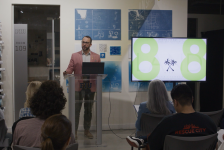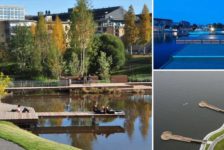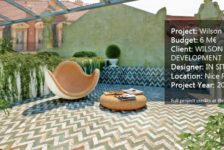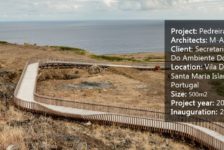Tianjin Cultural Park by Atelier Dreiseitl, in the city of Tianjin, China. What is culture? What does culture really help to do? Why is culture necessary? Culture is knowledge, personal experiences and notions are converted from simple learning to an element of our moral personality, spirituality, and aesthetic taste and become part of our consciousness and our world. The importance of cultural development, both for the individual and the collective, becomes obvious, so it was clearly the best choice for the Municipality of Tianjin to invest in the development of a cultural center in their downtown.
China’s 5th Largest City
The city of Tianjin is a megalopolis with a population of 13 million and is in continuous evolution. It is China’s 5th largest city, is deeply industrialized, and serves as the harbor for the city of Beijing, which is half an hour away by high-velocity train. In ancient China a Drum Tower was seen as an element of importance and prestige, in the Socialist Era the architectural element became a massive square, in the Contemporary Era it was Grand Theaters, and today it would be the Cultural Center of the Tianjin. Each of these is a real hymn to the culture of each era, and is an inspiring source of strong values that modern life risks to let be forgotten into the oblivion.
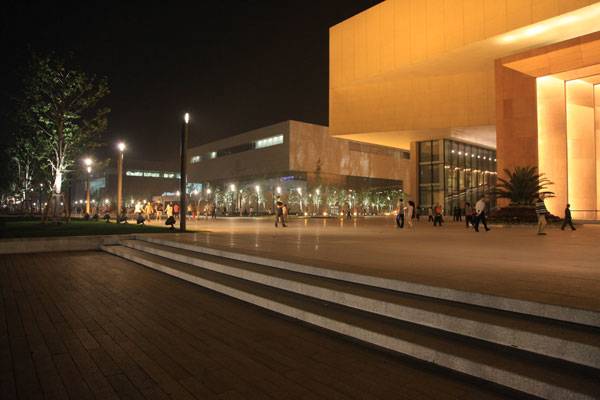
Tianjin Cultural Park. Photo credit: Dreiseitl
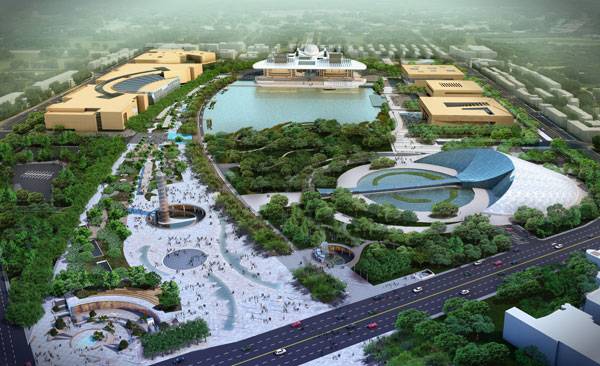
Tianjin Cultural Park. Photo credit: Dreiseitl
Tianjin Cultural Park
If this is the social objective pursued by a municipality, then there’s no doubt that we can say that it does. With a more open-minded approach, projects, such as this one, have been designed by Chinese and international firms, among them Atelier Dreiseitl worked on the landscape master plan, which became an integral part of the cultural development goal, this time in an ecological way. Highly qualified in the field of environmental sustainability, urban hydrology, environmental engineering and landscape architecture, Atelier Dreiseitl was founded by Herbert Dreiseitl in 1980. For their work on this project they were awarded a “Certificate of Honor for Outstanding Design” for undeniable aesthetic qualities of the project.
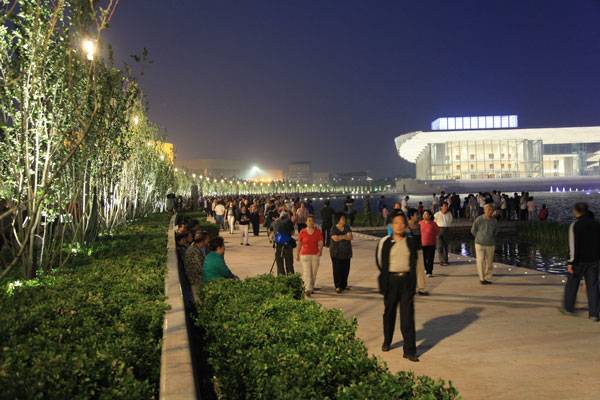
Tianjin Cultural Park. Photo credit: Dreiseitl
Issues The Must be Taken Into Consideration
Environmental themes such as pollution, water needs of such a large city, catastrophic events like floods and climatic changes are addressed in the design with concrete actions in order to gain environmental sustainability and more resilience to the environment. The keyword is resilience, which means the speed of each habitat to go back to its initial stage after being exposed to a particular environmental pressure that removed it from its initial state. The artificial lake, at 9,74 hectares wide, is overlooked by the new cultural center in such a dramatic way, but in reality it is a large reservoir that serves as an environmental shock absorber, collecting all of the stormwater from the site so that it can manage one storm event in ten years and buffer one storm event in a 100 year storm. This means that damages caused by extraordinary events can be reduced by the presence of this and other artificial basins found in the city.
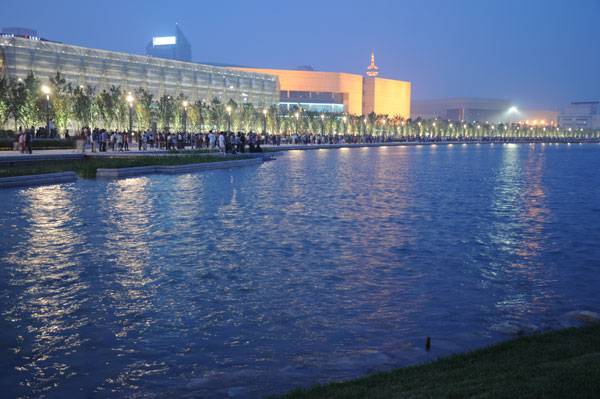
Tianjin Cultural Park. Photo credit: Dreiseitl
A Water Storage Basin
The lake functions as a water storage basin along the coast, which overlooks the city and prevents the rise of brackish water from the ocean. It also holds stormwater that would be poured into the sewage system and then into the river during times of flooding, and permits a slow release into the groundwater.
The Purification of Water and Recycled Stormwater
Furthermore, the presence of decentralized retention trenches allow the purification of the water through the use of cleansing biotope, and the large surface of purified water creates an autonomous ecosystem, that helps to minimize high peak temperatures and encourages the growth of local flora and fauna. Indeed the recycled stormwater is useful for the irrigation of the park in a sustainable way.
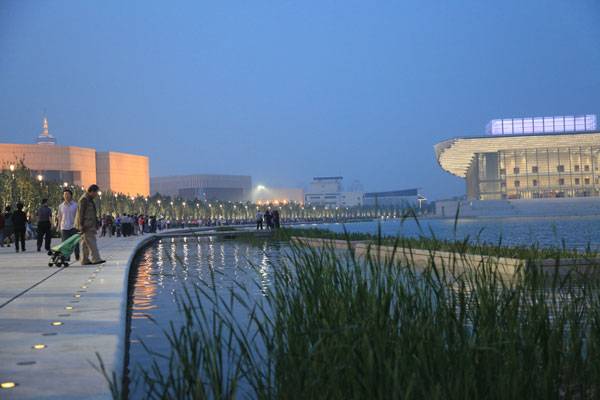
Tianjin Cultural Park. Photo credit: Dreiseitl
Could environmental culture change our behavior?
Water management carries the function of protection of the environment and of quality of life. Here, it also develops in a place where a densely built city meets recreational areas and nature, through places built on a human scale. As the city itself evolves in a direction of greater sustainability, the old patterns of behavior and environmental thinking can be changed: it is a practical example that makes citizens realize the importance of water, its management, power and value.
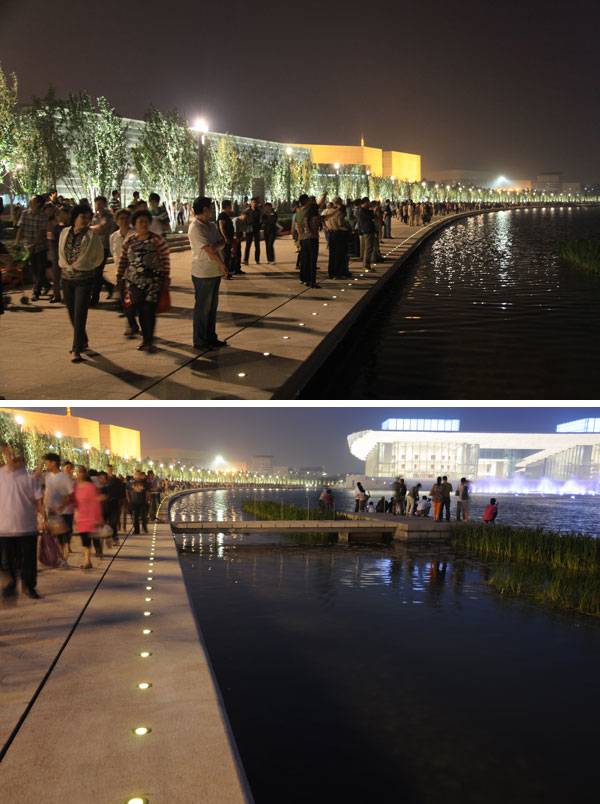
Tianjin Cultural Park. Photo credit: Dreiseitl
Design For Social Interaction
Outdoor comfort is gained by a masterful organization of the spaces: large pedestrian paths, each designed with a particular use in mind, creates a dynamic pedestrian experience: for example to the north near the Commercial Mall there is a linear promenade of trees that offers shelter from the cold Mongolian winds, next to this there is another path defined by sinuous green areas with bushes on which stone benches seem to emerge from the ground, and again at a lower level there is the real lakefront, dotted with glimpses of thematic gardens and enriched by the view of the buildings mirroring on its reflective surface.

Tianjin Cultural Park. Photo credit: Dreiseitl
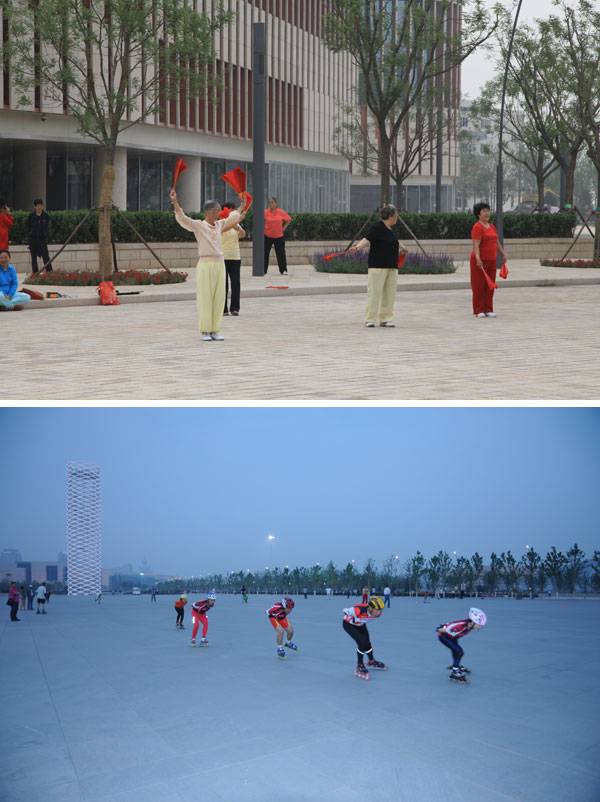
Tianjin Cultural Park. Photo credit: Dreiseitl
Unlike The Traditional Museums we Are All Use to
The result is unlike the old kind of museums we all know, it creates a gathering place that enriches the personal experience, encourages the development of varied interests, including reading, studying, arts, history, sciences, music, environment, and the spirituality of places.
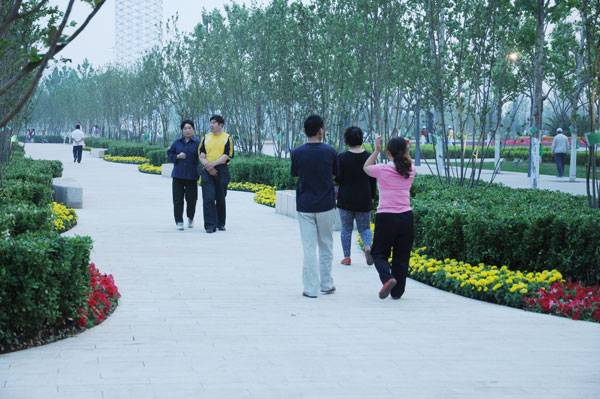
Tianjin Cultural Park. Photo credit: Dreiseitl
The Cultural Center by Night
The success of this project is proved by the number of people found here at every hour of the day and night and the message is also that there is time for culture in every moment of the day. During the day the Center is a gathering place and at night it is lively too, as people walk through on their way to the Grand Theater. To emphasize the atmosphere a leading musical fountain, imported from Las Vegas, plays for the entertainment of people enjoying their spare time hanging in the open air breathing in musical landscape and culture. Have you ever been in a cultural center like this one? What do you think you will appreciate more?
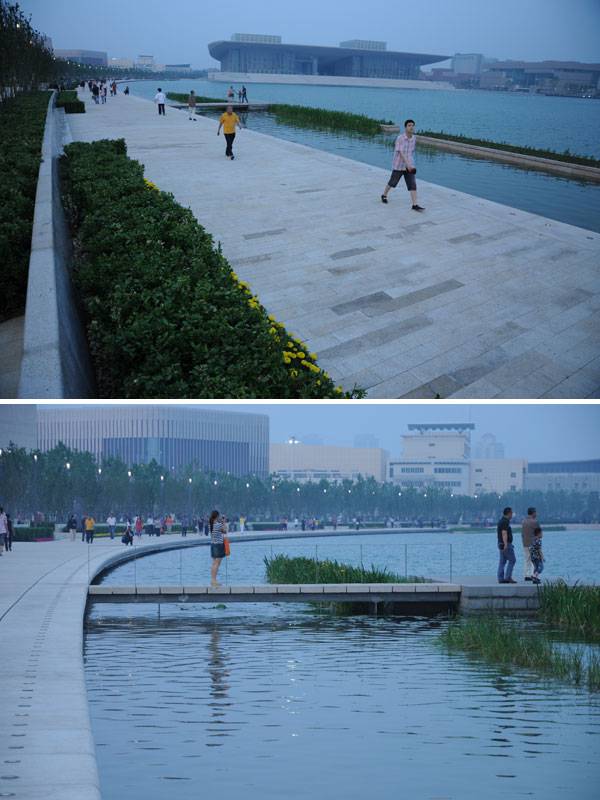
Tianjin Cultural Park. Photo credit: Dreiseitl
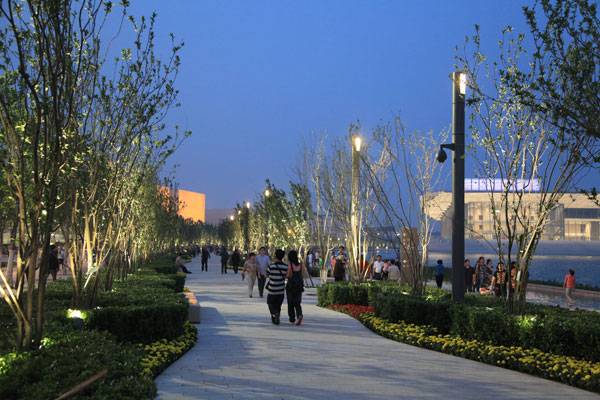
Tianjin Cultural Park. Photo credit: Dreiseitl
Full Project Credits For Tianjin Cultural Park
This project was carried out by Atelier Dreiseitl, now a member of the Ramboll Group. Urban planning: Rheinschiene, WLA Project: Tianjin Cultural Park Location: Tianjin, China Client: City of Tianjin Designers: Atelier Dreiseitl Architects: WLA, GMP, KSP, Riken Yamamoto, HHD, Callison, ECADI, TVSDESIGN Area: 90 ha / 222 acre Completion: 2012 Awards: Certificate of Honor for Outstanding Design Partner in Charge: Dieter Grau Project Manager and Lead Design: Hendrik Porst, Zhen Sun Project Engineer: Stefan Brückman Team: Jeremy Anterola, Bing Cao, Pei Dang, Berthold Flieger, Gustavo Glaeser, Wu Hao, Yinshi Jin, Duyuan Li, Philipp Nedomlel, Feng Ouyang,Jingcao Li, Tao Liang, Peijy Sun, Shengnan Tao, Jan Tatzel, Alexander Rohe, Markus Rötzer, Mauricio Villarreal, Sebastian Walker, Wenxiong Wu,Zhirong Yan, Liangli Zhao, Nengshi Zheng, Peng Zhou, Florian Zimmermann Recommended Reading
- Landscape Architecture: An Introduction by Robert Holden
- Landscape Architecture, Fifth Edition: A Manual of Environmental Planning and Design by Barry Starke
Article by Valentina Ferrari
Published in Blog


